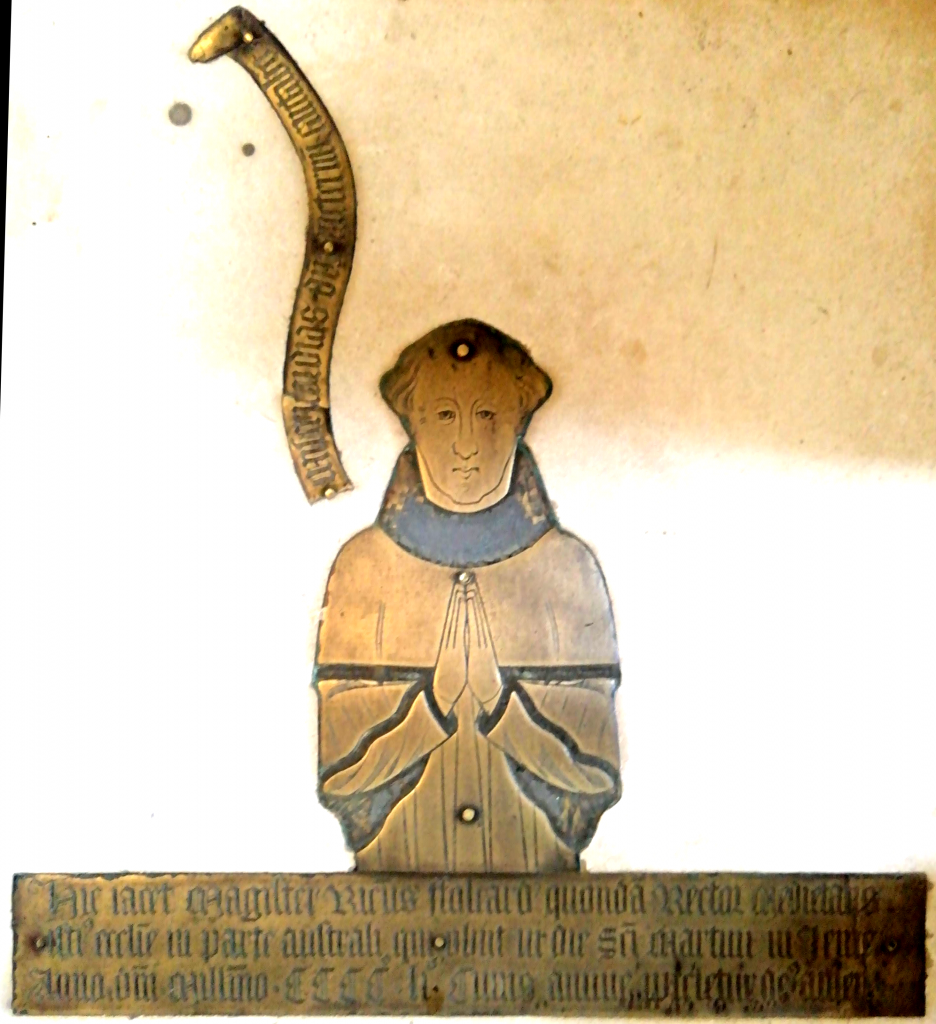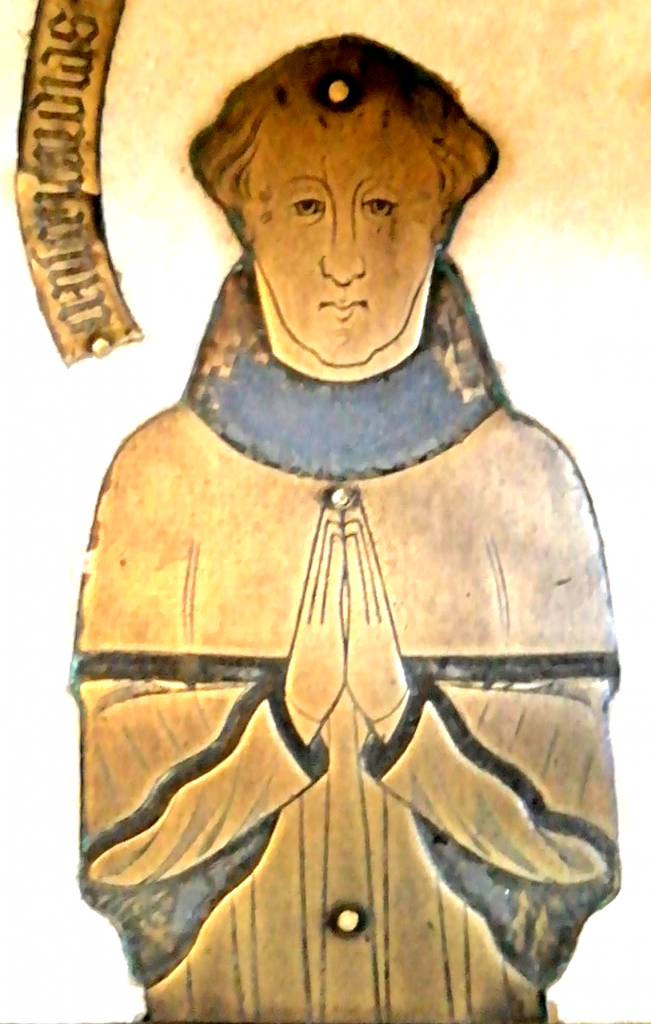Richard Folcard
- Date of Brass:
- Place:
- Pakefield
- County:
- Suffolk
- Country:
- Number:
- II
- Style:
- London B
Description
August 2021
The brass of Richard Folcard lies at the entrance to the south chancel of Pakefield church on the Suffolk coast, just south of Lowestoft. He was rector of the southern part of the church.
Pakefield church was a dual church: for hundreds of years it was divided in two, the southern half being dedicated to All Saints, the northern to St Margaret. The two halves were separated by a wall and constituted two churches until united in the eighteenth century.
The church retains another brass, to John Bowf and his wife Agnes. It is mounted on the north wall in a modern slab. The original slab can still be seen towards the eastern end of the north aisle, which would have been the nave of the northern part of the church. There are also a number of slabs which once bore brasses. They include the full-length figure of a priest as you pass into the church from the north porch, and an unusual one taking the form of a floriated cross head with an inscription beneath it in the north chancel. Most of these indents are of Purbeck marble.
There is no sign of the original slab of Richard Folcard’s brass. It had been replaced by a Portland slab by the time that Davy described it in the first half of the nineteenth century, although the indent was still in existence then.
Folcard is shown wearing academical costume as befits a former principal of an Oxford Hall and is a half effigy, with an inscription beneath and a scroll to the left of his head. Herbert Druitt, in his book Costume on Brasses, identified him as a Master of Arts.
His career is not well recorded. He was the Principal of Haberdash Hall, as revealed by a list of the principals of Oxford Halls compiled on 9 September 1438. It was presumably he who was a commissioner sitting in the Court of Admiralty at Ipswich in 24 Henry VI (1445-6). There he was described as a bachelor of law. Other than these snippets, all we know is his date of institution at Pakefield in 1445 (Thomas Bardolph esquire and his wife Alice being the patrons) and his date of death, St Martin’s day in Winter in 1451, the latter attested by the inscription of his brass.
His will was dated 9 November 1451 and proved nine days later. The vicar of nearby Kessingland was his executor. He left a considerable number of clerical vestments of different types to fellow clergy. A bequest to the poor of Blythburgh might indicate his birthplace, but where he fits into the various Folcard families in Suffolk and Norfolk is unclear.
The inscription reads:
Hic iacet Magister Ricardus ffolcard quondam Rector mediatatis
istius ecclesie in parte australi qui obiit in die Sancti Martini in Jeme
Anno domini Millesimo cccco lio Cuius anime propicietur deus Amen
It translates:
Here lies Master Richard Folcard sometime rector of the moiety
of this church in the southern part, who died on St Martin’s day in Winter
in the year of Our Lord 1451 On whose soul may God have mercy Amen
(St Martin’s Day in Winter was 11 November, as opposed to his feast day in the summer (Martinus calidus) which was 4 July.)
The scroll reads:
Misericordias domini in eternum cantabo
It translates:
I shall sing evermore of the mercies of the Lord
The brass belongs to the London B series.
Copyright:Jon Bayliss
- © Monumental Brass Society (MBS) 2025
- Registered Charity No. 214336



